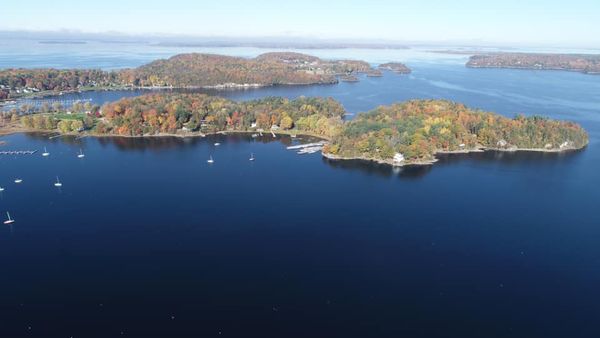
In 1833, Isaac and Lydia Howard Coates, accompanied by their two children, William (2) and Emma (6), left their home near Ipswich, England and set sail for America. Isaac, who was 33 at the time, was a farmer in England and the son of John and Mary Coates, also farmers. The Coates family arrived in Boston and over the next few years made their way to Colchester, Vermont.
The old town records contain many notations about the activities of Isaac and his son William. At a March 1, 1864 town meeting, Isaac was elected Highway Surveyor for District #4. In the 1893 report William was paid $15.98 for “work on highway”. William was also elected a “Sexton” in 1877 and continued in that role until 1893. A “Sexton” in those days was in charge of the cemetery, which is also the family’s burial plot.
In 1858, at the age of 23, Emma Coates, daughter of Isaac and Lydia, married James Thayer, a 30 year old farmer. This is the same Thayer family that “Thayer’s Bay” and “Thayer’s Beach” are named after. In 1860, William Coates, son of Issac and Lydia, married Adeline Thayer, sister of James Thayer. William and Adeline Coates had two children, Ida born in 1864 and William born in 1866.
Along with his father Isaac, William Coates was a farmer and maintained a small farm in Colchester in the area where the State Access and Champlain Marina are located. This parcel consisted of a house, barn, and several acres that bordered on Rt. 127 and the lake. The original homestead was a 20 acre parcel used as a garden that still remains owned by the family
On January 3, 1872 William and Adeline Coates acquired an 80 acre Island farm from Willian Munson at a cost of $1,617. This would hereafter be known as Coates Island. The earliest recorded transaction for the Island goes back to 1816 when E.M. Farrington sold it to Thomas Brownell. It was called Mathers Head at the time. The Island was initially used for farming purposes to graze the family’s cows and horses. However, it soon would become the “summer” home to several out of state campers.
William, or “Gompy” as he was commonly known, built a farmhouse in 1896 and a barn in 1897 with the help of his neighbors. He farmed the Island as well as the 20 acre lot on the mainland across from the homestead. In addition, he became quite famous as a fishing and hunting guide. He knew the Mallett’s Bay waters like no one else. In the summers he knew where the smallmouth bass could be found and in the fall where the best duck hunting for Whistlers (Golden Eye) was in the Bay. He was also an avid ice fisherman, trapper of muskrats, and speared fish in the swamps bordering the Island in the spring.
In the early 1900’s several camps were built on the Island. Many of the campers were from out of state, as Vermont and particularly Mallett’s Bay, was fast becoming known to many tourists.
Gompy and Gram became caretakers of Coates Island, living off the land, supplementing this with the small marina, building and maintaining the camps and leasing campsites. Gradually the number of camps grew to 36. In addition, there are four year round homes on the Island, now all owned and occupied by their descendents.
Gompy and Gram had three children, William Jr., Helen, and Mary. Mary died less than a month after her birth in 1912. William and Helen were born and brought up on the Island and shared the same love for it as their parents. William, as a young lad, labored with his father in the field and in the gardens. He married Minna Aust and together they raised three sons and two daughters (William III, James, David, Gladys and Helen)…the fifth generation. William, an electrician by trade, maintained the Island and ran the marina after his parents passed away.
A fire in 1982 nearly destroyed the farmhouse. The blaze was contained and the family was able to restore it to its original exterior design. The barn was completely restored in 1988. Many of the tools and artifacts have been saved and are maintained by the family to benefit future generations. In 1965 William and Helen set up a Trust to keep the Island in the family for as long as possible. The Coates-Cadwell Trust is still in existence today and their children (the fifth generation) have established an additional Trust that will ensure family control long into the future.
After 125 years, Coates Island has changed very little. Once you cross the causeway things are pretty much the same… the farmhouse, the barn, the fields, the roads, the campers, the boaters…the family. We believe it is a perfect example of what is possible if a family remains devoted and committed to something they love and respect.